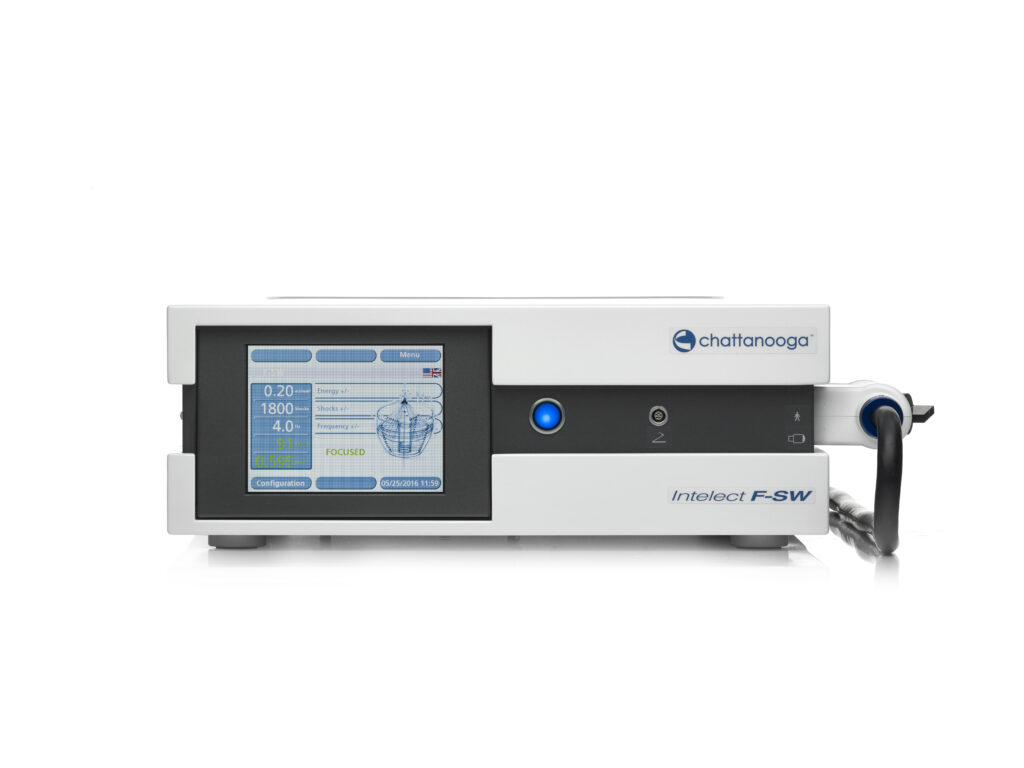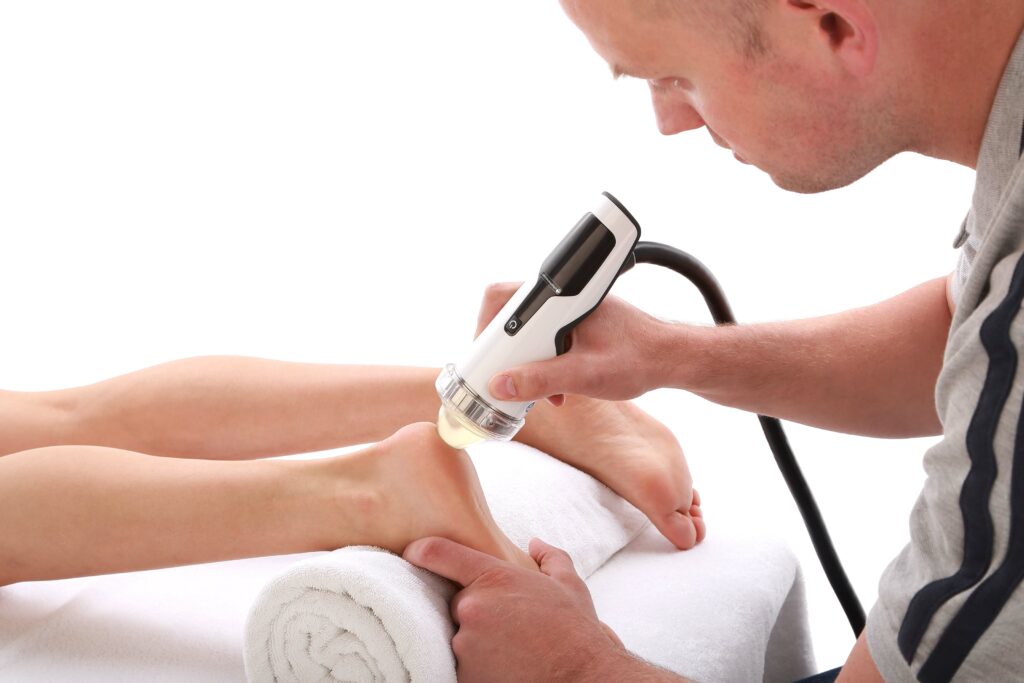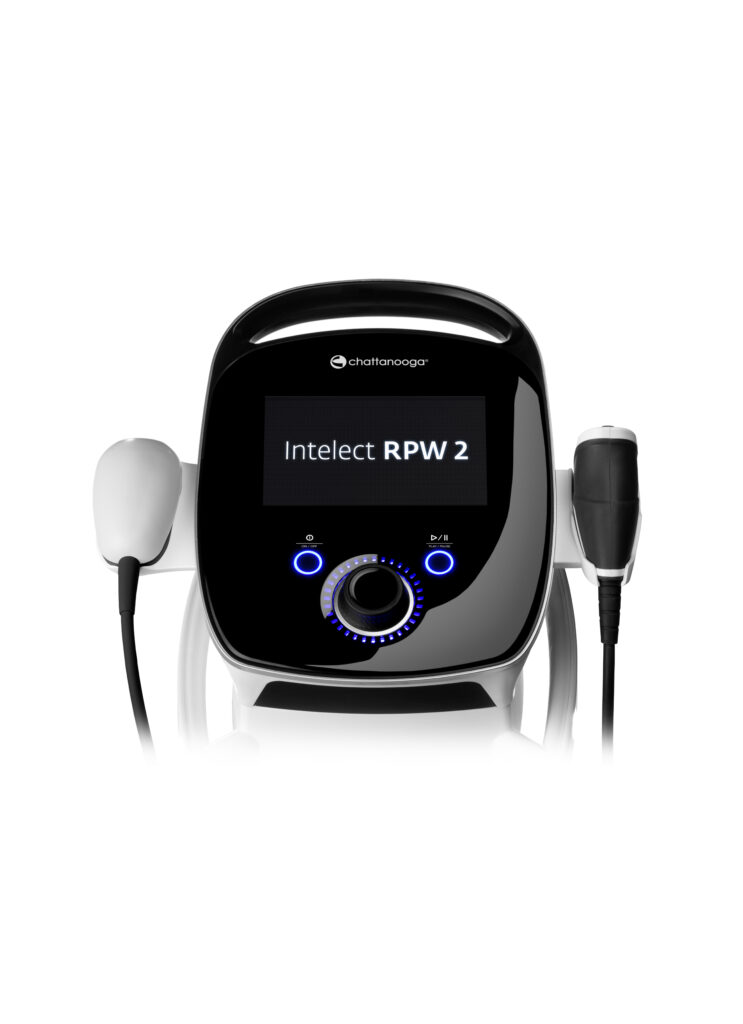Call 01483 459 659 or email uk.enquiries@enovis.com for assistance.
Alternatively, complete the form below and our team will be in touch.
Shock wave therapy is not a new modality; in its modern electronic form it has been around since the early 1980s, where it was first shown to have beneficial effects on treating kidney and biliary stones, and later on bone and wound healing.
However, despite now being an established medical intervention, questions still persist around the specifics of shock wave therapy. This article explains the difference between focused shock wave (F-SW) and radial pressure wave (RPW) therapy.

A shock wave is defined as a moving sound source travelling at more than the speed of sound. A stationary sound wave emits acoustic pressure waves that are evenly distributed in all directions. However, when the sound source is moving, the sound waves in front are compressed, and if the source moves faster than the speed of sound, the compressed waves overlap and create a shock wave, which is heard as a sonic boom.
It was noted that shock waves travel much better through water than they do through air, and that they could affect the body on a cellular level, thereby stimulating its intrinsic healing mechanism. This led to efforts to harness this phenomenon for medical applications, and the resulting technology became commonly known as shock wave therapy.
Shock wave therapy as we know it first came into practical use in the 1980s, in the form of focused shock wave (F-SW). As with the emergence of any new intervention, there was immediately a great deal of interest – and hype – surrounding it.
Researchers began conducting clinical trials, but with no real guidelines on parameters, results were conflicting. At the same time, therapists were treating through trial and error, with outcomes ranging from very good to poor. This led to a drop in interest during the 1990s, with practitioners becoming disillusioned with F-SW, due also in part to the relative high cost of the devices.
However, with the advent of modified modalities, better research, and the technology to study the therapeutic effects on a molecular level, interest in shock wave therapy was rekindled around the end of the 1990s. Manufacturers began building more affordable clinic-based F-SW devices, and therapists became better at incorporating shock wave therapy into their treatments, all of which helped lead to better outcomes for patients.
Then, towards the end of the 1990s, a new technology emerged: radial pressure wave (RPW) therapy. Just as F-SW machines were becoming more affordable, RPW devices turned out to be even cheaper to produce and answered the demand from clinicians for a shock wave technology that could be used to treat on a more superficial level over larger areas.
Now shock wave therapy is an accepted and valued intervention that generates positive outcomes, supported by a wide range of clinical studies, and with far more affordable devices available to practitioners.



While focused shock wave (F-SW) therapy and radial pressure wave (RPW) therapy are often referred to together as ‘shock wave’, or extracorporeal shock wave therapy, only one is truly worthy of the definition.
F-SW delivers maximum energy at a focal point in the tissue at a depth of between 4-6cm, though some devices can achieve therapeutic energy values down to 12cm. Conversely, RPW delivers maximum energy at the surface of the skin, which then travels radially into the body up to a depth of 5-6cm. If we look at the physical properties of the two interventions, we can see they are completely different (Fig. 1).
Firstly, a focused shock wave will produce a pressure peak in the range of 10-100 Mega-Pascals (MPa), compared to the positive peak pressure of 0.1-1 MPa for a radial pressure wave – 100 times the amount of energy. Furthermore, the time taken for a focused shock wave to reach that peak, as well as its overall pulse duration, is far shorter than that of an RPW.
Therefore, unlike F-SW, a radial pressure wave is not a ‘true’ shock wave.
Additionally, while both technologies involve the conversion of electrical energy into mechanical energy, the ways in which focused shock waves and radial pressure waves are generated and delivered are also different.
F-SW machines generate shock waves using either electrohydraulic, electromagnetic, or piezoelectric technology. The shock waves are generated in water contained in a standoff attached to a handheld applicator. These waves are then focused through a lens and transmitted into the tissue.
Most RPW machines generate radial pressure waves using either oil or air compressors. During use, the compressed air is released via a valve into the barrel of a hand-held applicator which contains a small projectile. As the valve opens and closes very quickly, the projectile is driven by the compressed air into a transmitter at the end of the applicator, where the kinetic energy is converted into acoustic shock waves.
To learn more about the effects and applications of shock wave therapy:
Alternatively, complete the form below and our team will be in touch.